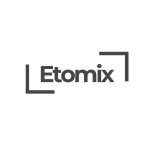Procurement Savings Tracking – 5 things to focus on How to track procurement savings effectively
Procurement savings tracking is essential to any business because it directly impacts the bottom line by identifying cost-saving opportunities and ensuring efficient use of resources. By systematically tracking savings, businesses can quantify the financial benefits of their procurement strategies, enabling more informed decision-making and better budget management. It fosters transparency and accountability, allowing stakeholders to see the tangible results of procurement efforts. Moreover, effective tracking highlights areas for improvement, drives continuous optimization, and supports strategic planning. Ultimately, a procurement savings tracker enhances financial health, competitiveness, and long-term sustainability.
Many operations executives and other internal stakeholders are often asking questions about whether the reported operations total contributions (Savings) are legitimate and realistic with a direct impact on the company’s financial performance. The company runs several risks without a standard and methodical approach to procurement savings tracking, planning and reporting:
- Miscommunicating the value delivered by Procurement and potentially guiding the business into making wrong strategic relocation, footprint initiatives or other strategical decisions.
- Impairing the trust relationship between Procurement and Finance department, resulting in spending a disproportionate amount of time and resources proving and justifying cost-saving numbers.
Procurement Savings Tracking should be easy – why are there so many challenges?
What is a procurement saving?
A procurement saving is a financial measure of a reduction or lessening of costs on products and/or services purchased. Typically, the cost baseline is a previous year’s price, but may also be a budget, estimate or planned expense multiplied by a quantity purchased in the same period. To reach a high level of transparency, the savings are broken into two basic types: cost savings and cost avoidances.
Cost savings typically have a direct impact on Profit & Loss (P&L) statement and EBITA and are calculated as a variance between a previous year’s price and a newly negotiated price multiplied by the quantity purchased.
What is a cost avoidance?
Cost avoidances maintain current spend levels by avoiding price increases and inflation or market effects and are calculated as a variance between the budget price and a newly negotiated price multiplied by the quantity purchased. Though cost avoidance initiatives normally do not have an immediate impact on the P&L compared to a prior period, a healthy Procurement organization will track the impact of such activities to fully capture the efforts and value provided by performing such activities.
Strong Procurement savings tracking, planning and reporting in conjunction with the robust Strategic sourcing review processes are essential for any Business that wants to take Procurement seriously. Unfortunately, this is often not the case for lots of businesses where strategic sourcing reviews are unstructured, savings projects are delivered with long delays with huge negative impact on P&L, savings get reported incorrectly due to the use of several Excel spreadsheets and errors and so on.
This can be fixed with the implementation of robust definitions, savings planning and reporting processes, strategic sourcing review processes and use of best-in-class digital procurement technologies.
Five key steps to track procurement savings effectively
Define Clear Metrics: Establish precise and standardized metrics for measuring procurement savings, ensuring all stakeholders have a common understanding of what constitutes savings.
Implement a Tracking System: Use specialized software or tools, such as a Procurement Savings Tracker Application, to systematically record, monitor savings data and do master data cleansing.
Regularly Review and Update Data: Conduct periodic reviews to verify the accuracy of savings data, update any changes, and adjust strategies as needed.
Engage Stakeholders: Involve all relevant stakeholders, from procurement teams to financial departments, to ensure collaborative efforts and alignment in tracking and reporting savings.
Report and Analyze Results: Generate regular reports to analyze savings performance, identify trends, and make data-driven decisions to optimize procurement strategies further.
Contact us and let us help you get your Procurement Savings reporting, tracking and planning to the Best in class levels with our expertise in this area and use of our Procurement savings tracking tool.


